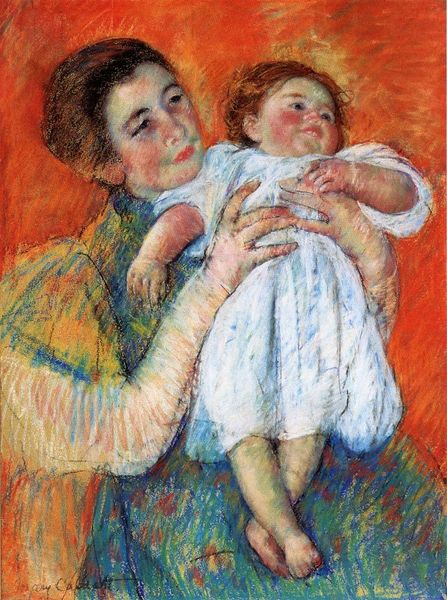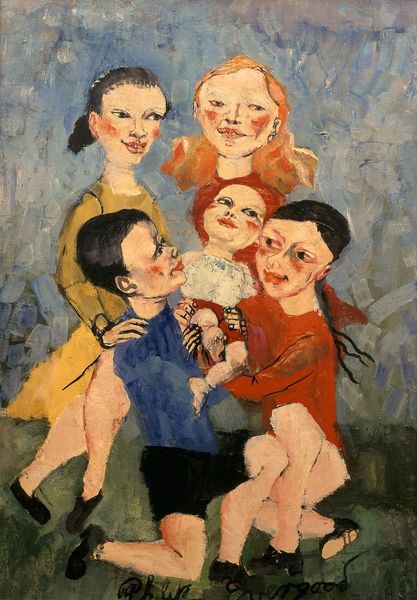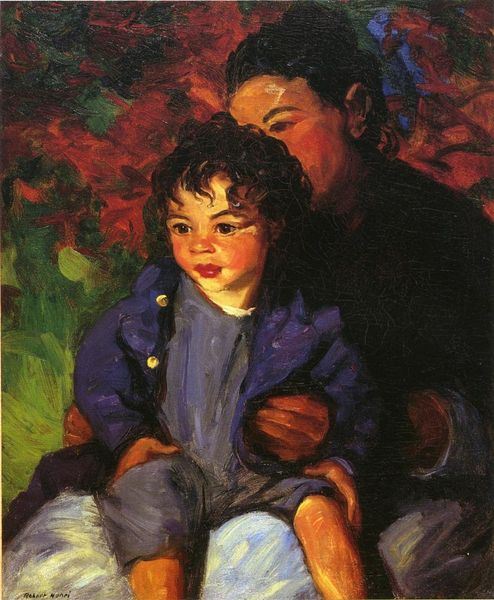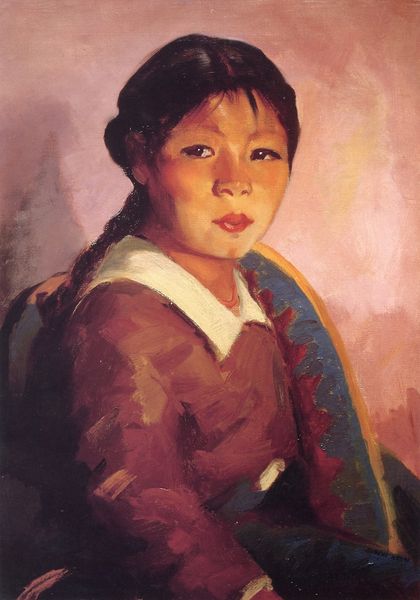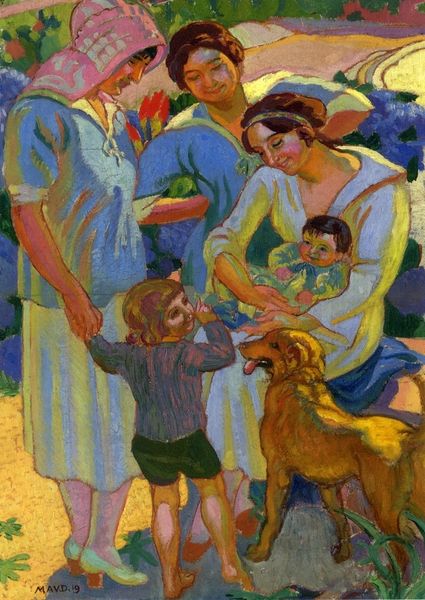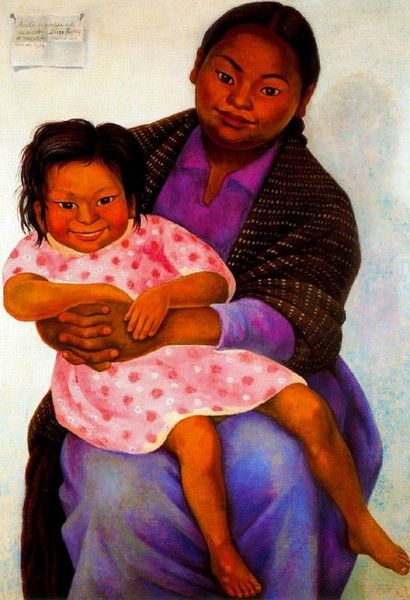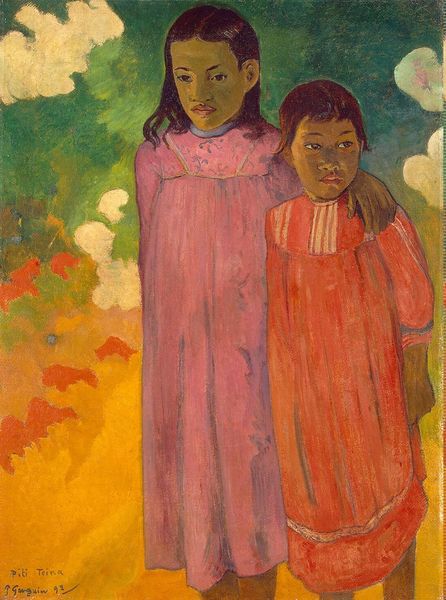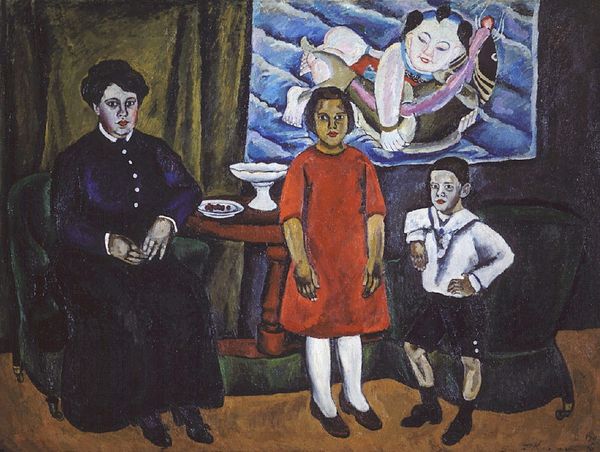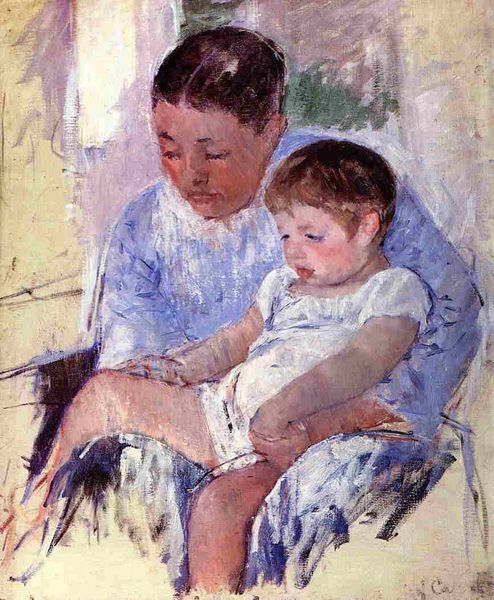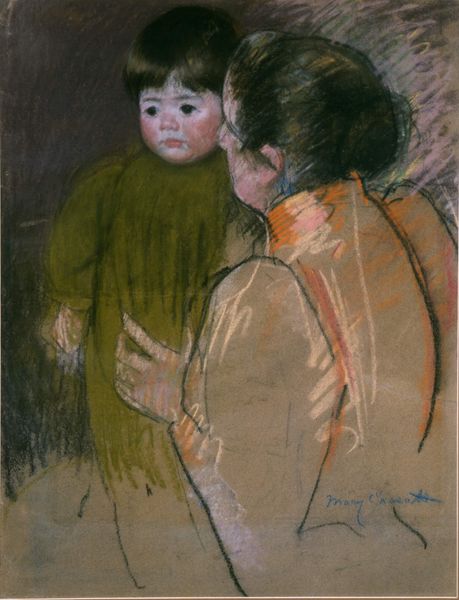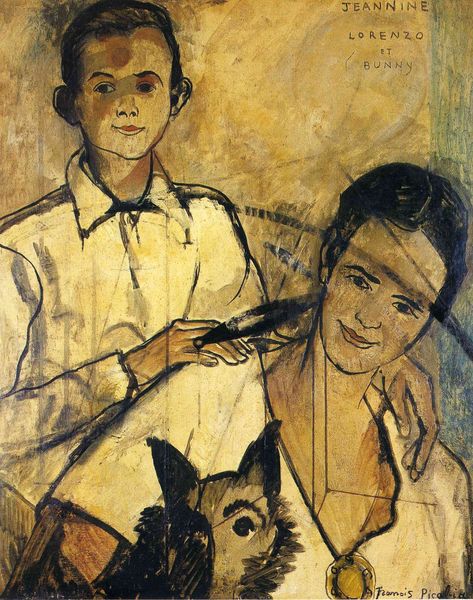
painting, oil-paint
#
portrait
#
painting
#
oil-paint
#
figuration
#
oil painting
#
child
#
intimism
#
group-portraits
#
genre-painting
#
post-impressionism
Copyright: Public domain
Curator: Paul Gauguin's oil painting, "Tahitian Woman and Two Children," completed in 1901, invites us to consider his constructed vision of Polynesia. Editor: It's immediately striking, isn't it? The slightly melancholic feel, a quiet sense of gravity despite the children being present. There’s something both familiar and unsettling about their gazes. Curator: Gauguin painted this during one of his periods living in French Polynesia. The canvas gives an insight into his visual and conceptual fascination with ideas around family and "the primitive". I find that even the texture of the oil paint lends an earthiness to the figures, grounding them in their environment. Editor: Right, and consider the symbolic weight of the objects— the doll-like creature the older child holds, the small adornments that are clearly signifiers, telling a story, even if we don’t have the entire vocabulary. Do you see the colors how he limits his color palette, to conjure the emotions of the depicted scene? Curator: Yes, the restricted palette and simplified forms certainly create a sense of serenity and timelessness, aligning with Gauguin's vision of an unspoiled, prelapsarian society in Tahiti. That idealized vision clashed strongly with the realities of colonial society. Editor: Definitely a romanticization. Look how the children are being positioned: they're less active figures, more emblematic representations. The way Gauguin handles his colors brings symbolic qualities; not reflecting nature literally. Curator: And it's impossible to ignore the way that his paintings served as cultural projections, impacting not only how the West viewed Tahiti, but, subsequently, the identities of Tahitians themselves through art. Editor: The cyclical feedback loop of visual language… it highlights how the perception of a culture is itself an artifice constructed and propagated over time, doesn't it? Curator: Precisely. His construction of visual cues invites continuous discussion on the effects and consequences of projecting identity onto colonized people and spaces. Editor: It seems it's important to think about more than just the idyllic composition: to appreciate the deeper symbols at work, and the troubling sociohistorical themes behind them, too.
Comments
No comments
Be the first to comment and join the conversation on the ultimate creative platform.

